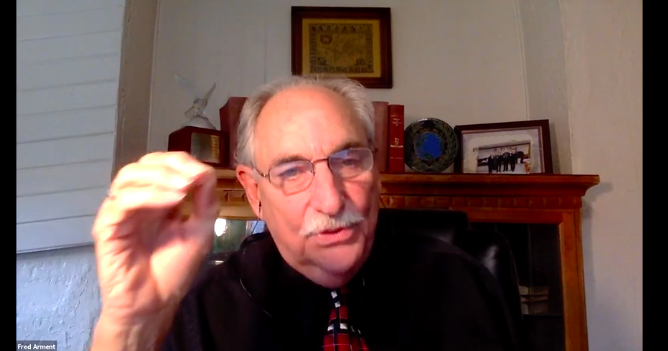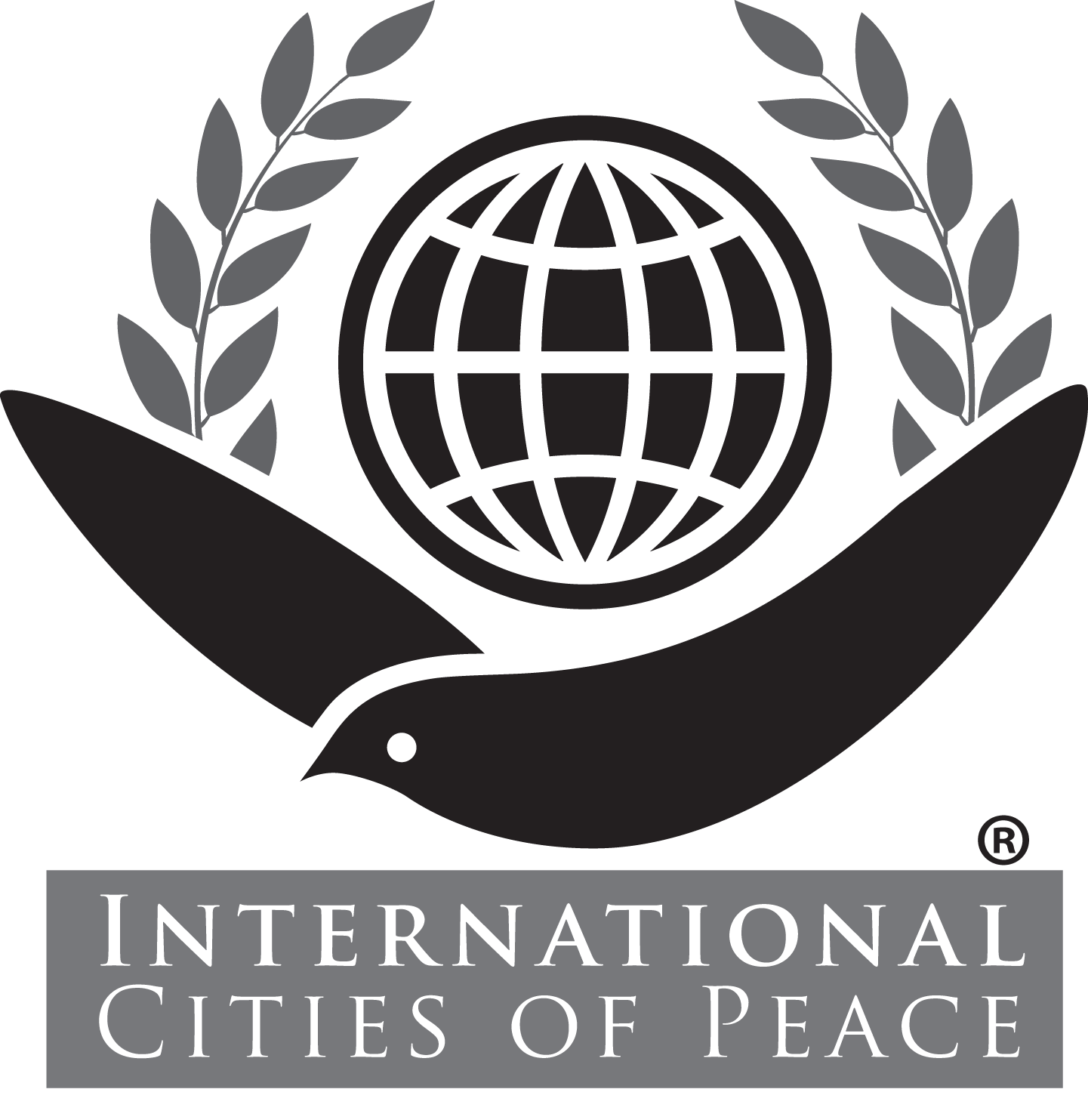Stanford World Peace Network
On October 15, 2021, Board Chair and Lead Facilitator J. Frederick Arment spoke for the Stanford Global Peace Network. The Center on Democracy, Development and the Rule of Law (CDDRL) at Stanford University is “an interdisciplinary center for research on development in all of its dimensions: political, economic, social, and legal, and the ways in which these different dimensions interact with one another. We seek to understand how countries can overcome poverty, instability, and abusive rule to become prosperous, just, democratic, and well-governed societies. We also want to analyze the ways in which democracy and development can be threatened by the authoritarian resurgence, technology, populism, and the broader process of globalization.”
The following is an excerpt from the Stanford speech by J. Frederick Arment:
_______________
“A Practical Strategy for Global Peace”
J. Frederick Arment, Executive Director, International Cities of Peace
“My personal thanks goes to the organizers and sponsors of this event, including Stanford University, the Center on Democracy, Development and the Rule of Law, and specifically the World House Project.
“King was quick to point out that “Love is ultimately the only answer to mankind’s problems.” His vision of the Beloved Community and the World House are firmly fixed in the evolution of peacemaking. Yet, as inspiring as his visionary leadership was — it is we, you and I, who are left to take action.
“PRACTICAL peace building. That is what I’d like to talk about today.
“Our task, in my view, is to visualize how to effectively put in place a global culture of peace that is PRACTICAL AND SUSTAINABLE. More generally, we need to implement new strategies for fulfilling the PROMISE of humankind. The Covid-19 pandemic has given us a wake-up call. It is one more way we have learned– along with many other potentially existential threats — that we must accelerate change in the way we ORGANIZE for peace.
“Just as technology and industry are CHANGING at a rapid pace, peace work must also change before our challenges overwhelm us. Peace work must EVOLVE quickly. We must find the best STRATEGIES. We can no longer simply rely on nation-states whose essential mission is to compete with other nation-states for resources and dominance. And we can no longer rely on telling people HOW to find peace. The world is TOO diverse. Cultures have individual natures. Our strategies for achieving global peace are WORN OUT and, as we know, time is short to achieve the UNITY that is essential for cooperative success.
“That’s where Cities of Peace comes in. Villages, towns, and cities are the organizing units CLOSEST to our family units. The objectives of our communities are very straight-forward. Keep our families safe. Make sure our children are not hungry and have a roof over their heads. Provide the highest level of quality of life, such as clean water and education, so each individual can find their purpose.
“This is how International Cities of Peace defines peace: SAFETY, PROSPERITY, AND QUALITY OF LIFE for ALL in each and every community. These are the CONSENSUS VALUES of peace around the globe. Peace is about FREEDOM from harm, from want, from oppression.
“Peace building at the community level has IMMEDIATE impact. Needs are known and solutions come from COOPERATION between all sectors of society. Peace building means supporting schools and health clinics. It means taking care of orphans and those at-risk, including refugees and those affected by war, poverty and hunger. It means teaching nonviolence and the Golden Rule.
“IMAGINE 1000 Cities of Peace, each with teams of citizens “IN SITU”, or in the situation, where they know the NEEDS of their community and can find UNIQUE solutions. Peace in community depends on the citizens that LIVE in that community. The future is THEIRS to decide. The old technology of peace building is failing. Much of the billions of dollars telling people how to find peace has been wasted. When the money is spent, when the outside volunteers are gone, the community is often left with a sense of abandonment. The truth is: the people in a community must carry on. They must CONTINUE to work for peace when the EYES of the world are no longer on them.
“They MUST BE INSPIRED and fully responsible for their OWN future. How can we fully embrace that essential fact — that it is up to EACH COMMUNITY TO FIND PEACE in their own way. How do we organize a peaceful world WITHOUT DOMINATING?
“As the ancient adage teaches, “Give a person a fish, and feed them for a day. Teach them to fish, and you will feed them for a lifetime.” Our greatest challenge as peacemakers: How can we, in this Age of Covid, teach the world, IN EFFECT, TO FISH? How can the DECENTRALIZED dynamic of community meet the challenge of providing safety, prosperity, and quality of life for EVERYONE around the world. How can we ensure a sustainable peace?
“I am pleased to report that International Cities of Peace is fully embracing a DECENTRALIZED strategy. We have turned the USUAL NGO dynamic of centralized control ON ITS HEAD. Instead of a top-down bureaucracy, we identify and encourage community leaders to build volunteer TEAMS to find solution to the basic needs that only those living in the community can really know.
“We have achieved success in many areas and have been recognized with Special CONSULTATIVE Status with the United Nations body for NGOs.
“Peace, in our view, is not just a hope. It’s a community RIGHT. Hundreds of International City of Peace “in situ” leaders UNDERSTAND the social, economic, and often the political factors that effect the lives of citizens in their communities. They UNDERSTAND the needs and are in the best position to know solutions. The challenge is to find community leaders that are VETTED AND TRUSTED, that have a track record of practical community work. It is a two-way partnership of MUTUAL RESPECT AND ACTION.
“International Cities of Peace has many successful case studies of how this two-way dynamic works. For instance, early in this difficult year, as Covid-19 began to ravage the world, one City of Peace asked if they could help OTHER, LESS ADVANTAGED Cities of Peace during this crisis. In Nanjing, China, the City of Peace team leaders inquired if there was a City-to-City program where the people of China could provide resources to stop the spread.
“Upon a suggestion, it was decided that there would soon be a great NEED in Africa to get in front of the virus before it devastated that continent of 1.2 billion people. As a decentralized NGO, we were IMMEDIATELY IN CONTACT with trusted leaders in Nigeria, Uganda, D.R. Congo, Kenya and many other at-risk countries.
“WITHIN DAYS, City of Peace leaders in Africa sent their UNIQUE solutions to stop the spread of Covid-19. These solutions RANGED from providing thermometers and soap to installing central washing stations and providing rice for rural families that would soon be in lockdown. Nanjing mini-grants QUICKLY began flowing to over 30 Cities of Peace communities through leaders that had been VETTED after years of volunteer work. The City-to-City Mini-grant program was a MAJOR success. It was fast. It was FLEXIBLE. It was MEASURABLE and WITHOUT corruption.
“The success of the International Cities of Peace mini-grants from Nanjing is a HARBINGER of the way NGOs must operate in the future. The “in situ” peace leaders in the community suggested HOW the funds could make the most positive difference. Best of all, after the funding for the mini-grants ran out, the leaders KEPT ON WORKING to inform and educate about Covid-19. They volunteered in ways that motivated MORE volunteers and extended the compassionate reach of those in Nanjing even to this day.
“Giving those leaders a “fish” was NOT the point. They knew HOW and WHERE to “fish”. We RESPECTED their understanding of community. We simply HELPED them help themselves. Our leaders were building the INFRASTRUCTURE of peace. Safety, prosperity, and quality of life for all. That is how peace can be won.”
_______________




